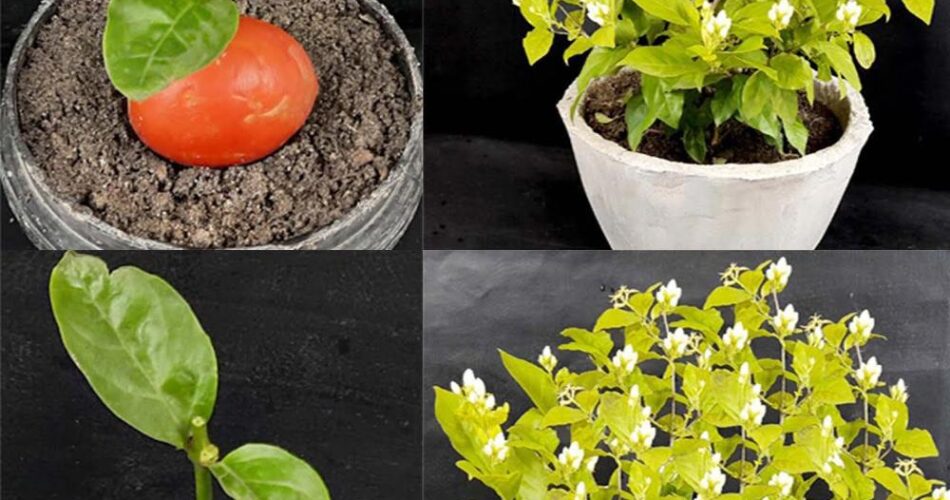How to grow jasmine from cuttings in a tomato
Jasmine is a beautiful and fragrant plant that adds beauty to any garden. If you want to spread your jasmine from cuttings, you can opt for an unconventional method using a tomato as a growth substrate. Here is a detailed guide to help you grow jasmine from cuttings in a tomato.
Materials required:
- Jasmine buds
- Mature tomato
- Quality soil
- Flowerpot
- Gardening scissors
- Wooden stick or pencil for making holes
- Water
Steps to follow:
1. Preparation of cuttings: Choose healthy jasmine cuttings about 10-15 cm long and remove the leaves from the bottom to expose the knots. You can also soak the ends of the cuttings in rooting hormone to promote root growth.
2. Preparation of tomato: Gently cut the top of the tomato and remove the pulp inside to create a space to insert the cuttings. Make sure the tomato is ripe but not rotten.
3. Tomato filling: Fill the gutted tomato with quality soil, ensuring that it is well ground and moist to support the growth of cutting roots.
4. Planting of cuttings: Gently insert the jasmine cuttings into the soil inside the tomato, ensuring that they are firmly in place. You can plant several cuttings in a single tomato to increase your chances of success.
5. Watering and maintenance: Place the tomato with the cuttings in a bright place but not in direct sunlight. Water regularly to maintain wet soil. Also make sure the tomato stays stable by placing a wooden stick or pencil next to it to support it if necessary.
6. Transplantation: Once the cuttings have developed roots and the growth of the plants is robust, you can transplant them into individual pots with a mix of soil suitable for potted plants.
7. Continuing care: Continue to maintain your jasmine plants by providing them with good watering, adequate light exposure and fertilizer as needed. Enjoy the beautiful flowering of your jasmine grown from cuttings in a tomato.
By following these simple steps, you can experiment with a unique method of spreading jasmine from cuttings in a tomato. This original approach can be fun and rewarding, in addition to adding an interesting touch to your garden. Feel free to try this technique and share your experiences with other gardeners.
